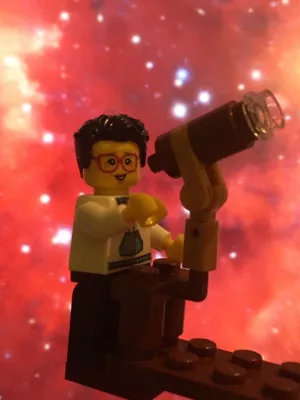
Jens Hoeijmakers
ASSOCIATE SENIOR LECTURER

Molecular mapping of the PDS70 system : No molecular absorption signatures from the forming planet PDS70 b
Author
Summary, in English
Context. Determining the chemical properties of the atmosphere of young forming gas giants might shed light on the location their formation occurred and the mechanisms involved. Aims. Our aim was to detect molecules in the atmosphere of the young forming companion PDS70 b by searching for atmospheric absorption features typical of substellar objects. Methods. We obtained medium-resolution (R ≈ 5075) spectra of the PDS70 planetary system with the SINFONI integral field spectrograph at the Very Large Telescope. We applied molecular mapping, based on cross-correlation with synthetic spectra, to identify signatures of molecular species in the atmosphere of the planet. Results. Although the planet emission is clearly detected when resampling the data to lower resolution, no molecular species could be identified with the cross-correlation technique. We estimated upper limits on the abundances of H2O, CO, and CH4 (log(Xmol) < -4.0, - 4.1, and - 4.9, respectively) assuming a clear atmosphere, and we explored the impact of clouds, which increase the upper limits by a factor of up to 0.7 dex. Assuming that the observations directly probe the planet's atmosphere, we found a lack of molecular species compared to other directly imaged companions or field objects. Under the assumption that the planet atmosphere presents similar characteristics to other directly imaged planets, we conclude that a dusty environment surrounds the planet, effectively obscuring any feature generated in its atmosphere. We quantify the extinction necessary to impede the detection (AV ≈ 16-17 mag), pointing to the possibility of higher optical thickness than previously estimated from other studies. Finally, the non-detection of molecular species conflicts with atmospheric models previously proposed to describe the forming planet. Conclusions. To reveal how giant planets form a comprehensive approach that includes constraints from multiple techniques needs to be undertaken. Molecular mapping emerges as an alternative to more classical techniques like SED fitting. Specifically tuned atmospheric models are likely required to faithfully describe the atmospheres of forming protoplanets, and higher spectral resolution data may reveal molecular absorption lines despite the dusty environment enshrouding PDS70 b.
Department/s
- Lund Observatory - Undergoing reorganization
Publishing year
2021-09-01
Language
English
Publication/Series
Astronomy and Astrophysics
Volume
653
Document type
Journal article
Publisher
EDP Sciences
Topic
- Astronomy, Astrophysics and Cosmology
Keywords
- Planets and satellites: atmospheres
- Planets and satellites: formation
- Planets and satellites: individual: PDS70b
- Techniques: imaging spectroscopy
Status
Published
ISBN/ISSN/Other
- ISSN: 0004-6361

